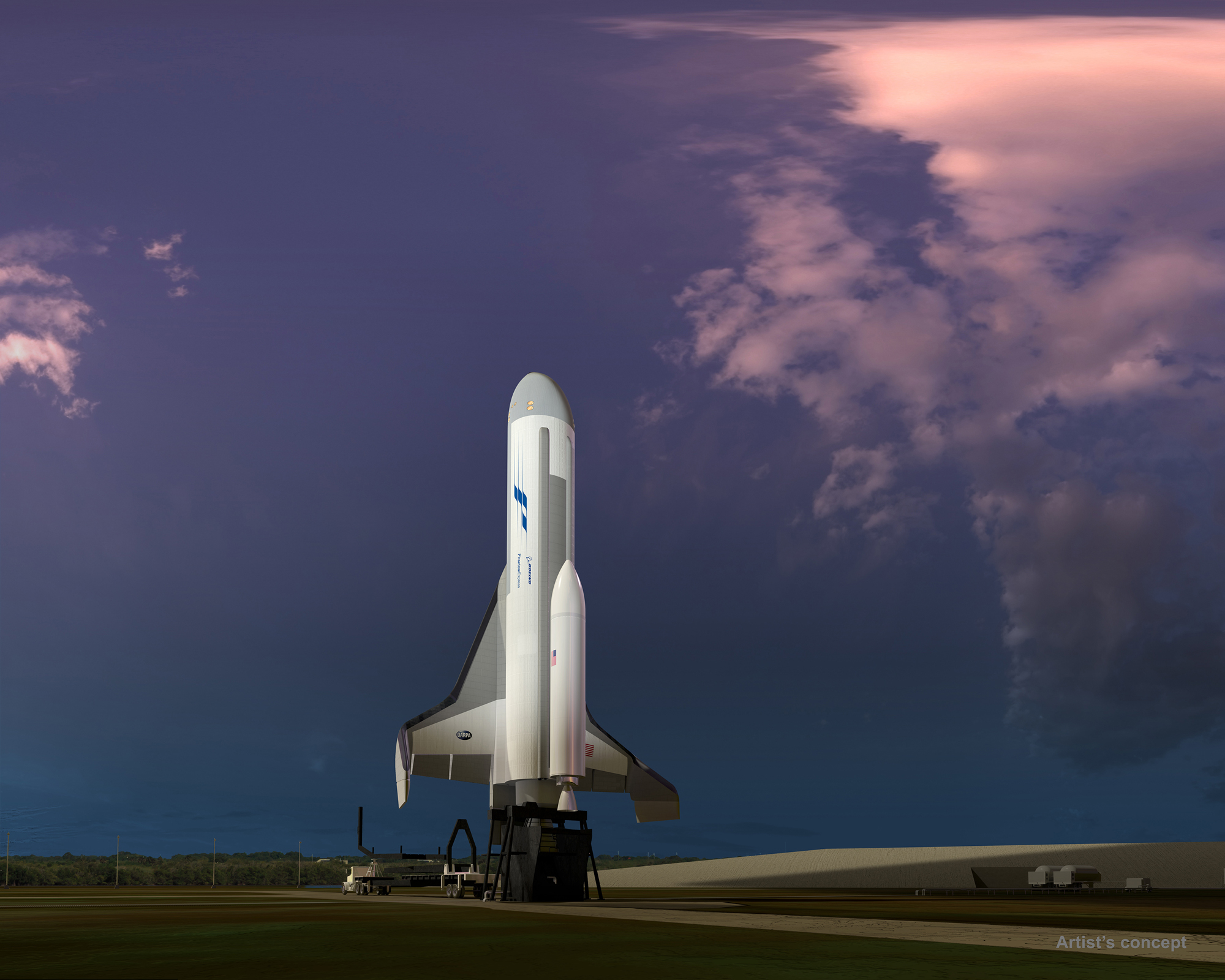DARPA scraps XS-1 military space plane project after Boeing drops out

Phantom Express won't get off the ground after all.
Boeing has withdrawn from Experimental Spaceplane (XSP), a U.S. Defense Advanced Research Projects Agency (DARPA) program designed to increase the nation's access to space.
The aerospace giant had named its hypersonic concept vehicle Phantom Express. That moniker is now oddly appropriate, since the spacecraft will never take physical form.
Related: DARPA's Experimental XS-1 Space Plane in Pictures
"This effectively ends the XSP program; however, the objectives of the program remain of interest, and may be explored in separate, competitively selected efforts," DARPA communications chief Jared Adams told Space.com via email.
Experimental Spaceplane, previously known as XS-1, aimed to nurture the development of a reusable vehicle that could help loft satellites cheaply and rapidly. Indeed, DARPA wanted the craft to be capable of launching 3,000-lb. (1,360 kilograms) satellites into orbit 10 times in 10 days, at a cost envisioned to drop eventually to around $5 million per mission.
DARPA initiated Experimental Spaceplane in 2013. In 2017, the agency selected Boeing for the second and third phases of the program. Boeing won out over two other teams — one a partnership between Masten Space Systems and the now-defunct XCOR Aerospace, and the other a collaboration involving Northrop Grumman and Virgin Galactic.
Breaking space news, the latest updates on rocket launches, skywatching events and more!
During Phase 2, Boeing's Phantom Works division — which built the U.S. Air Force's two robotic X-37B space planes — was to design, build and test a technology-demonstration vehicle. Phase 3 would have involved test flights of Phantom Express, with 12 to 15 such demonstration missions originally targeted to take place in 2020.
The suborbital Phantom Express vehicle would have launched vertically, with the aid of a single Aerojet Rocketdyne AR-22 engine. An expendable upper stage would have separated from the space plane at altitude, carrying the payload to orbit. Phantom Express, meanwhile, would have glided back to Earth for a runway landing (and another launch in relatively short order).
But none of that will happen, as Boeing has moved on.
"Following a detailed review, Boeing is ending our role in the Experimental Spaceplane (XSP) program immediately," company representatives said in a statement emailed to Space.com today (Jan. 23).
"We will now redirect our investment from XSP to other Boeing programs that span the sea, air and space domains," they added. "We're proud to have been part of a DARPA-led industry team that collaborated to advance launch-on-demand technology. We will make it a priority to harvest the significant learnings from this effort and apply them as Boeing continues to seek ways to provide future responsive, reusable access to space."
In response to a question about DARPA possibly seeking a refund on the award given to Boeing, Adams said, "Per the Other Transaction Authority agreement for XSP, the company received payments in accordance with milestones reached."
Though the United States didn't end up getting a reusable spacecraft out of Experimental Spaceplane, the program still had numerous benefits, Adams stressed.
"The detailed engineering activities conducted under the Experimental Spaceplane Program affirmed that no technical showstoppers stand in the way of achieving DARPA's objectives, and that a system such as XSP would bolster national security," he said. "Through XSP, DARPA identified evidence that present-day liquid rocket propulsion systems are capable of supporting XSP objectives, remain of interest, and may be explored in separate efforts."
- US Military's XS-1 Space Plane Will Be Built by Boeing (Video)
- Military Space: Spacecraft, Weapons and Tech
- Space Planes: Evolution of the Winged Spaceship (Infographic)
Mike Wall's book about the search for alien life, "Out There" (Grand Central Publishing, 2018; illustrated by Karl Tate), is out now. Follow him on Twitter @michaeldwall. Follow us on Twitter @Spacedotcom or Facebook.


Michael Wall is a Senior Space Writer with Space.com and joined the team in 2010. He primarily covers exoplanets, spaceflight and military space, but has been known to dabble in the space art beat. His book about the search for alien life, "Out There," was published on Nov. 13, 2018. Before becoming a science writer, Michael worked as a herpetologist and wildlife biologist. He has a Ph.D. in evolutionary biology from the University of Sydney, Australia, a bachelor's degree from the University of Arizona, and a graduate certificate in science writing from the University of California, Santa Cruz. To find out what his latest project is, you can follow Michael on Twitter.
